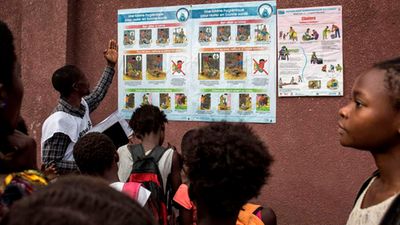Nine people have died of cholera in the Democratic Republic of Congo’s Haut-Lomami Province.
Doctors without Borders (Médecins Sans Frontières) have warned that more lives could be lost due to lack of basic health services in Mulongo area.
In Kabamba region of Mulongo, the current epicenter of the epidemic, MSF has set up a cholera treatment center with a capacity of 30 beds in Mulongo.
Two cholera treatment units were also set up in Ngoya and Bukena health centers, to curb the spread of the disease. It appears the region faces an acute lack of health personnel and facilities.
“The MSF cannot do everything, it is important to call on other organisations and partners to respond to the multiple needs of the population, particularly in the water, hygiene and sanitation sector,” said Clément Shap, Médecins Sans Frontières’ project coordinator in Haut-Lomami Province.
The East Africa

